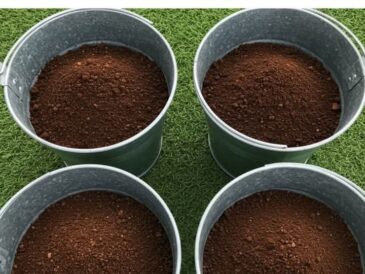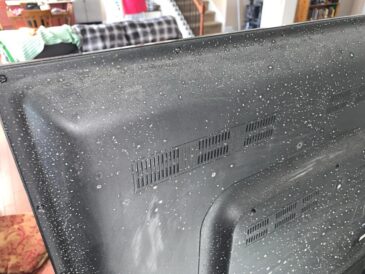Using an electric kettle to boil water may seem like a simple task, but many people make common mistakes that can shorten the device’s lifespan and even affect the quality of the water and user safety. Here are the five most frequent mistakes made by 9 out of 10 households.
1. Choosing Any Type of Electric Kettle
The primary function of an electric kettle is to boil water, but not all kettles are created equal. When buying an electric kettle, it’s important to select one made of stainless steel. Specifically, kettles made from 304 stainless steel are the best option, as this type of steel is resistant to corrosion and can withstand high temperatures. A kettle made of 304 stainless steel ensures that the water remains clean and safe after boiling.
Plastic kettles, while often more affordable, can release harmful chemicals when exposed to high heat, potentially contaminating the water. For this reason, experts recommend opting for stainless steel kettles or, in some cases, high-quality glass kettles, which do not impart any chemical residues to the water.
304 stainless steel has the added benefit of being easy to clean and offering exceptional durability. This type of steel does not rust easily, even after years of use. Moreover, it doesn’t impart a metallic taste to the water, unlike other materials.
2. Overfilling the Electric Kettle
Many people fill their electric kettles to the brim, thinking that more water is always better. However, this poses significant risks. One of the main reasons you should avoid overfilling your kettle is the risk of water overflowing. As the water boils, it can spill over, which could then leak into the kettle’s base, potentially causing a short circuit and permanent damage to the appliance.
Electric kettles are usually designed with a maximum water level indicated inside. It is essential to follow this line to prevent any overflow. Not only does this protect your device, but it also ensures that the boiling water is evenly distributed, allowing the kettle to operate optimally. Overfilling the kettle can also slow down the boiling process, as more water takes longer to heat.
3. Turning on the Kettle Before Adding Water
Another common mistake is turning on the kettle before adding water. This habit can be extremely damaging. When you turn on the electric kettle without filling it with water first, the heating element gets hot without being submerged in water, causing it to overheat and potentially “dry boil.” This can cause severe damage to the heating element, affecting the performance and lifespan of the kettle.
To avoid this, always fill the kettle with water first, then place it on its base, plug it in, and switch it on. Make sure the kettle’s base is dry before placing it on the stand, as any water on the base can also cause a short circuit.
4. Pouring Out All the Water After Boiling
After boiling water, it’s common to pour it into a bottle, thermos, or cup for later use. However, it is not recommended to pour all the water out immediately after boiling. Instead, it is best to leave some water inside.
The reason is simple: When the kettle is still hot and its base remains heated, pouring out all the water can cause the thermal relay to dry out, which can affect the longevity of the kettle.
By leaving some water inside, you allow the heating element to cool down more gradually. This helps to prevent wear and tear on the internal components and ensures that the kettle stays in good condition for a longer time. Additionally, leaving a small amount of water inside prevents the heating element from coming into direct contact with the air, which could cause it to deteriorate more quickly.
5. Rarely Cleaning the Electric Kettle
Regular cleaning of your electric kettle is critical. If you don’t clean it often, a yellowish residue (limescale) can build up inside. This not only affects the taste and quality of the water, but it can also be harmful to your health in the long run.
Limescale buildup typically occurs due to hard water, which contains high levels of minerals like calcium and magnesium. When the water is heated, these minerals solidify and settle on the kettle’s interior walls, forming deposits. While these deposits are generally harmless in small amounts, excessive buildup can impact the flavor of the water, reduce the kettle’s efficiency, and eventually cause internal damage.
To clean your kettle, you can use vinegar, as it is an excellent natural cleaner that breaks down alkaline residues and dissolves limescale. To do so, fill the kettle with a solution of half water and half vinegar, then bring it to a boil. Let it sit for 15 to 30 minutes before emptying it. Afterward, rinse the kettle thoroughly with clean water to eliminate any vinegar odor.
It’s also recommended to clean your kettle at least once a month to maintain its efficiency and prolong its lifespan.
Other Common Mistakes to Avoid
In addition to the five mistakes mentioned above, there are other habits that can harm the durability and safety of your electric kettle. For example:
- Using excessively high temperatures: Some electric kettles have multiple temperature settings. While it may be tempting to use the highest setting to boil water quickly, this can damage the heating element over time. Use appropriate temperature settings depending on your needs.
- Using contaminated water: Always use clean, filtered water in your electric kettle. Using dirty or unfiltered water can cause quicker limescale buildup and other internal residues, which can clog up the kettle’s components.
- Not checking the cables and connections: Before using your kettle, always check that the power cables and connections are intact. Worn-out cables or faulty connections can be dangerous and may cause a short circuit.
Conclusion
While using an electric kettle may seem simple, there are many common mistakes that can affect the appliance’s performance and water quality. By avoiding these mistakes and following simple maintenance tips, you can extend the life of your kettle, ensure that the water remains clean, and keep your appliance functioning safely.
By choosing a high-quality stainless steel kettle, adhering to the recommended water levels, cleaning your kettle regularly, and using it properly, you can ensure that your kettle remains a reliable and safe tool in your kitchen for years to come. Additionally, taking these precautions will help preserve the taste and quality of the water you consume daily. So, take care of your electric kettle, and it will take care of you!





